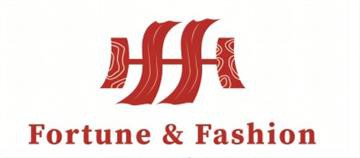Development status of digital printing
Apr 03, 2023
There is not much difference between enterprises in the traditional textile printing industry, which can easily lead to vicious price competition; In addition, traditional enterprises mostly obtain benefits through cheap labor and large-scale production, so the development space is very small. As the printing industry gradually declined, digital printing technology emerged. With the increasing maturity of digital printing technology, the printing industry is gradually moving from decline to prosperity.
But with the real transformation of digital inkjet printing technology from proofing and small batch processing to mass customization and large-scale production, the integration of digital inkjet printing technology with online collaborative solution customization platforms and e-commerce forms allows radical processing enterprises to generally join the brand and plan scale through rapid production response, providing characteristic manufacturing products, environmental protection and low-carbon sustainable development, etc; By conveniently connecting with the internet, enterprises can also reduce the number of unimpeded hubs.
At present, the trend of the textile printing market model is: the number of small and medium-sized batch printing orders is rapidly increasing, while the number of large orders is gradually shrinking. At the same time, the application for pattern patterns, depth and exquisite quality is increasing, and the delivery cycle is shortened.
On the other hand, with the improvement of China's society, economic development, and living standards, the consumption concept of the textile market has also undergone changes. People's consumption of "multiple types, localization, short cycles, and values civilized creativity and environmental protection" textiles needs to increase day by day.
The terminal product structure of the textile printing and dyeing industry is undergoing a profound adjustment, and the end demand oriented towards "customer personalization, fast and ever-changing" has encouraged enterprises to abandon the conservative commercial content of "small quantity, slow replacement" in textile printing and dyeing. Firstly, facing the pressure of expanding delivery time, improving product quality, lowering inventory costs, and improving services, enterprises must provide quick feedback to the constantly changing market, And continuously explore manufactured products that meet the needs of naturalization.
With the increasing demand for printing, the traditional printing industry has to fundamentally innovate, and the development space for digital printing is very large.
Typical Representative
Toshiba, Konica, Ricoh, Canon, Xerox, Ossie, etc. This type of device generally includes three major parts: the scanning part, the laser printing part, and the folding and binding part. Its functions are relatively comprehensive, allowing for scanning, copying, printing, and digital publishing.
This type of device belongs to a multi-functional digital printing system, which is a type of digital printing. It has transformed from a single output device to a digital input and output integrated device.
Digital printing all-in-one machine
The output speed is 20, 30, 40, 50, 60, 70, 80, 100 pages per minute or even higher, suitable for a wide market range; The addition of digital technology ensures stable quality; Simple equipment operation and clean working environment; The digital "group" service system has become a reality, making it more convenient for users; Low system cost and strong competitiveness; It is precisely these characteristics that digital printing all-in-one machines possess that we expect their development prospects to be broad.
(1) Digital multifunctional all-in-one machine - developed based on printer technology
This type of device is similar in principle to the former, but due to their lack of mastery of high-speed laser printer core technology (excluding Canon and Xerox), most manufacturers' digital all-in-one machines can only compete in the low-speed (less than 30 pages per minute) market, and even compete for the market of fax machines and printers. It is difficult for such devices to enter the digital printing market.
(2) Digital printing machine - developed from printing machine technology, digital technology, and electronic ink technology
A typical representative is HP INDIGO.
(3) Digital printing machine - developed from printing machine technology, digital technology, and in machine direct plate making technology
Typical representative: Heidelberg DI.






